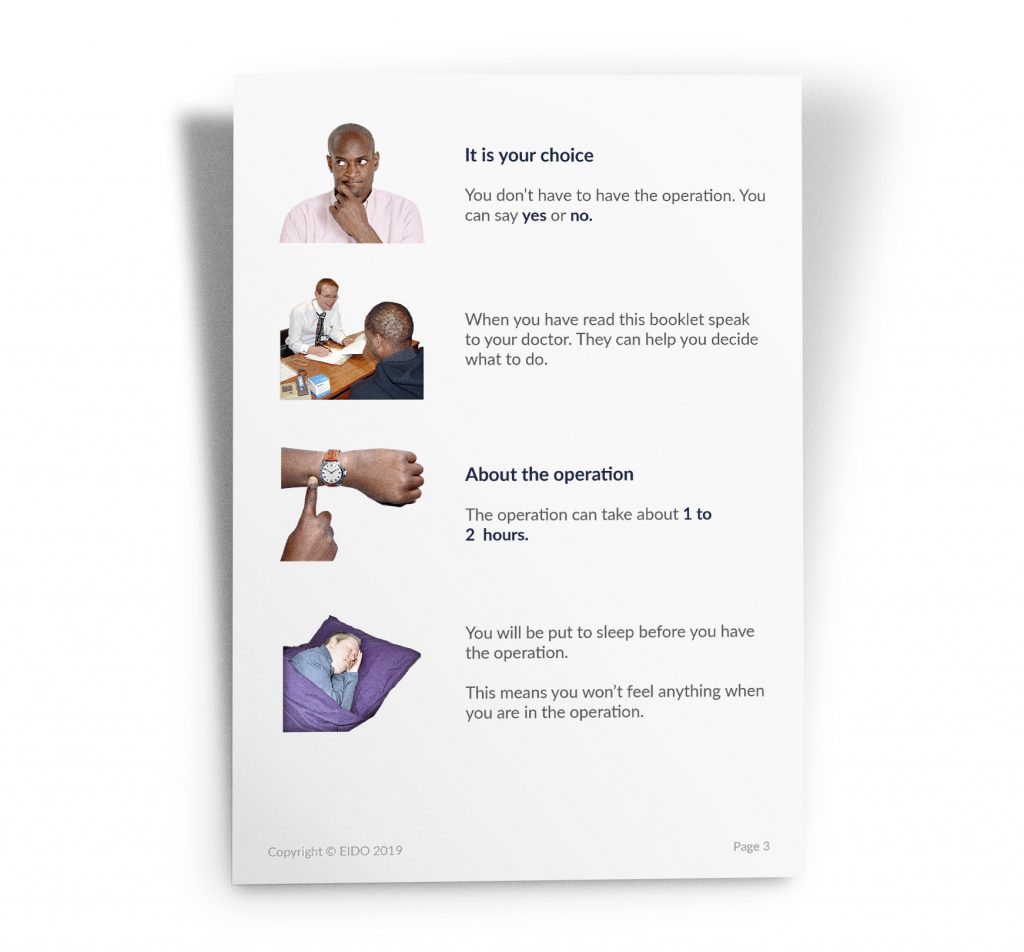Health literacy is the term used to describe the capability of an individual to understand the information they’re given in a healthcare setting and use this information when making decisions about their own care.
The below definition from the World Health Organization gives further insight into what health literacy is:
The personal characteristics and social resources needed for individuals and communities to access, understand, appraise and use information and services to make decisions about health.
World Health Organization
What is Health Literacy Month?
Founded in 1999 by Helen Osborne, Health Literacy Month is about promoting the importance of understandable health information. Good communication between doctor and patient is vital, and in an age of patient-centred healthcare it’s crucial health professionals are providing their patients with materials which are easy to read, informative and helpful.
Taking place every October, Health Literacy Month helps raise awareness of the importance of accessible medical information. It’s also an opportunity to have conversations with organisations, colleagues and like-minded individuals about improving the standard of health literacy within your organisation.
Why is good health literacy so important?
Recent studies in England have shown that 43% of working age adults struggle with text-based health information. That figure rises to 61% if this information also includes numbers. [1] Without being given clear information they understand, it’s almost impossible for a patient to make an informed decision about their treatment.
The most potentially damaging research suggests that patients are unable to understand or remember the details of the information required for educated choice. [2]
Len Doyal, ‘Informed Consent: Moral necessity or illusion?’
Ensuring the patient understands the information they’re given and feels that their concerns regarding their treatment are being heard is a vital part of the healthcare journey.
EIDO’s work on accessible patient information
Relaying medical information in a clear way that everyone will understand can be challenging as medical terms and technical jargon can often be confusing. Studies have shown that the average reading age within the UK is between nine and eleven-years-old, meaning information must be delivered in a simple way so it is accessible to everyone. [3]

Since 2016 it has been a legal requirement for any organisation in the UK which provides NHS care and/or publicly-funded adult social care to follow the ‘Accessible Information Standard’. [4] This standard was put in place to make sure individuals with learning difficulties, sensory loss and impairments are given information which they understand in a format which is suited to them.
In line with this standard, every document in our library is available in large/giant print and screen reader format. A number of our documents are also available in Easy Read format specifically created for individuals with a learning disability, as well as patients who have difficulty processing information.
Our main document library is also reviewed for readability by the Plain English Campaign. Every document in our Inform library receives the Plain English Campaign ‘Crystal Mark’, their seal of approval that our documents are well-written and easy to read.
2020 saw the beginning of EIDO’s partnership with the Patient Information Forum (PIF). The Patient Information Forum examine the content and processes of organisations creating and publishing health information. If the organisation being assessed are found to produce trustworthy information and have a consistent and documented process, they are awarded the ‘PIF TICK‘. EIDO have been awarded the PIF TICK for the reliability of our document library and the robust production processes we adhere to in the production of all of our content.
Everyone has the right to information they understand which can help them make an informed decision about whether they wish to undergo a specific treatment. [5] Providing patients with clear and simple information is crucial to informed consent and good health literacy.
[1] ‘A mismatch between population health literacy and the complexity of health information: an observational study’, British Journal of General Practice (2015) (https://bjgp.org/content/65/635/e379).
[2] Len Doyal, ‘Informed Consent: Moral necessity or illusion?’, BMJ Journals (2001).
[3] ‘What do adult literacy levels mean?’, National Literacy Trust (2017) (https://literacytrust.org.uk/parents-and-families/adult-literacy/what-do-adult-literacy-levels-mean/#top).
[4] ‘Accessible Information Standard’, NHS (2017)(https://www.england.nhs.uk/ourwork/accessibleinfo/).
[5] ‘Consent: patients and doctors making decisions together’, General Medical Council (2014)(https://www.bahrs.co.uk/content/large/documents/patient_advice/rcs_consent_ntwc05-app1-conspts-drsmakingdecisions-v04-issjan16.pdf).